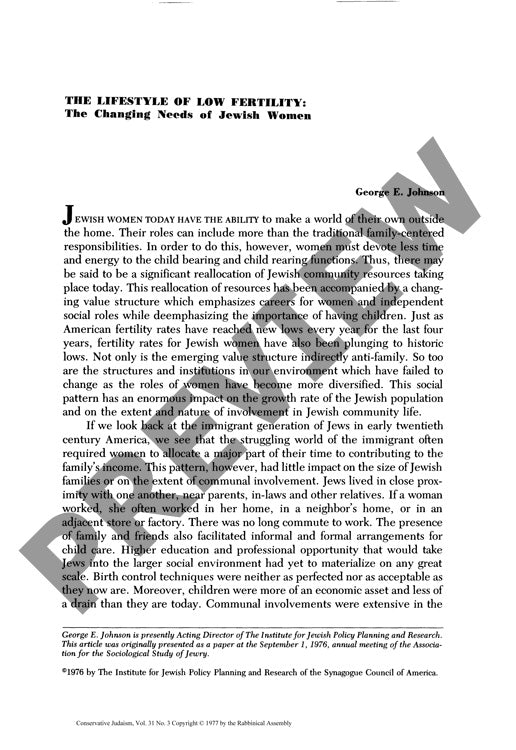The Lifestyle of Low Fertility the Chang
Couldn't load pickup availability
Jewish fertility rates have plummeted to historic lows, threatening the long-term vitality of American Jewish communities and their institutions. Across three generations - from early 20th-century immigrants to suburban homemakers of the 1940s-50s to today's professional women - dramatic shifts in Jewish women's roles have transformed family formation patterns. Drawing on demographic data from the National Jewish Population Study and sociological analysis, this research combines quantitative demographic methods with qualitative examination of evolving social structures and value systems. The findings reveal that educated Jewish women increasingly prioritize careers and delay childbearing, mirroring broader American demographic trends. A stark correlation emerges between parenthood and religious engagement: only 22% of childless young married couples maintain synagogue membership compared to 56% of couples with children under fourteen. The suburban environment itself creates structural barriers for women balancing careers and family life, including limited childcare options and transportation systems designed for single-earner households. These demographic shifts demand fundamental changes in community priorities and service provision to support dual-career families while addressing the existential challenge of Jewish demographic survival.

More Information
-
Physical Description
-
Publication Information
Published 1977
ISBN
-
Publication Credits
George Johnson

